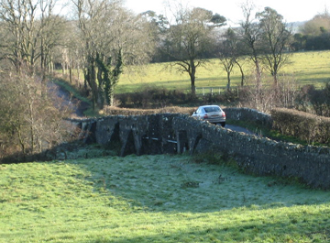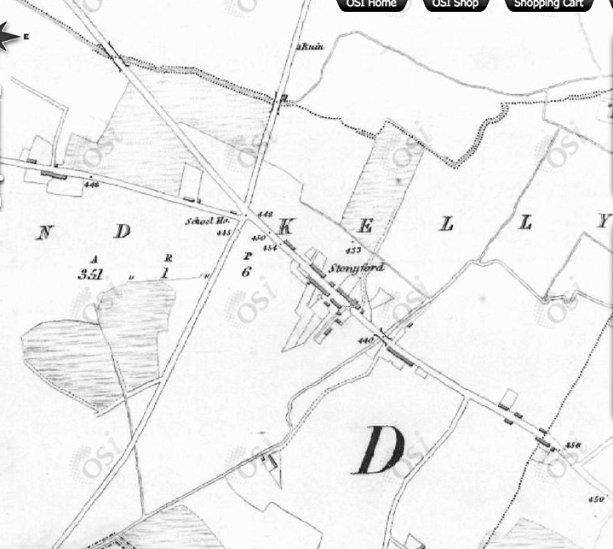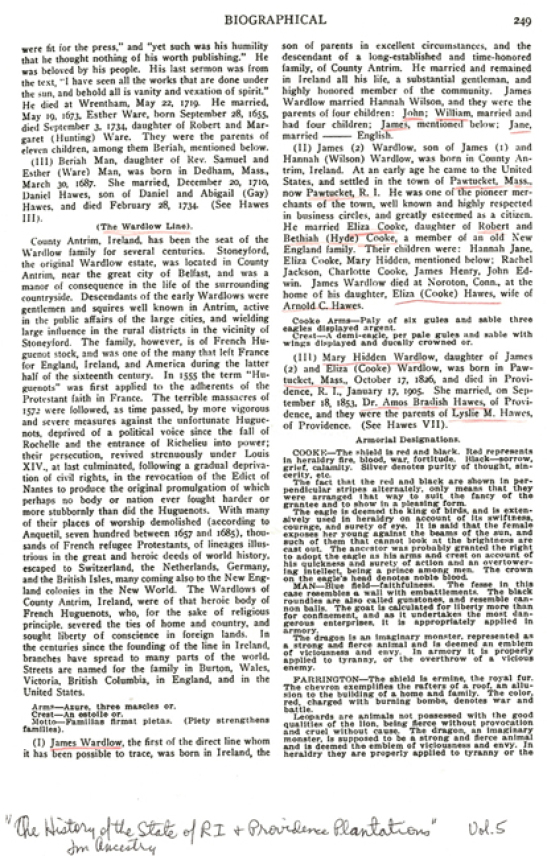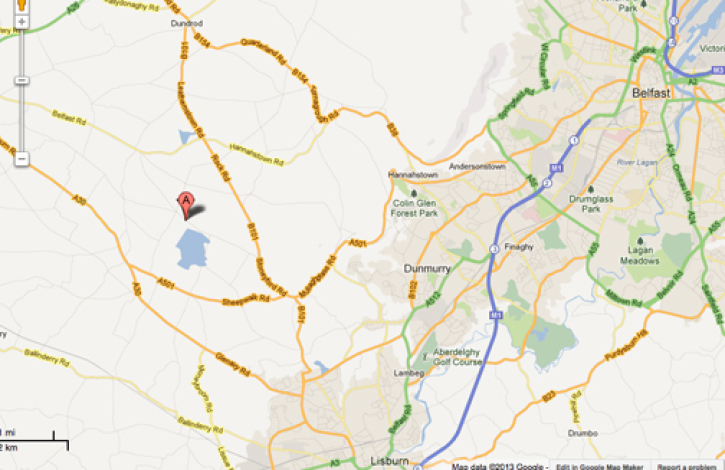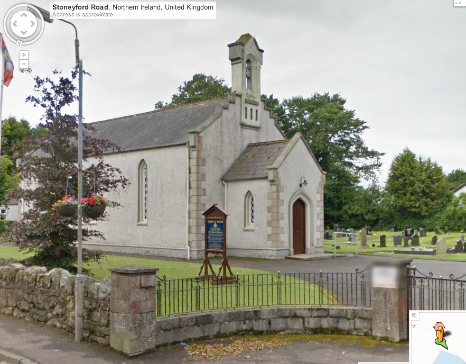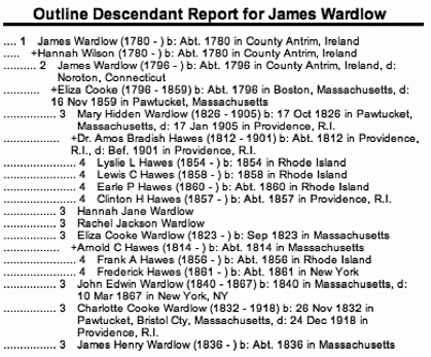Ireland
Recent research has discovered quite a number of Wardlaws/Wardlows living in Ireland, many of whom most likely migrated over from Scotland. We have been given a unique opportunity to have a native Ireland genealogy researcher do an extensive and comprehensive study for us to search all the Wardlaws/Wardlows in Ireland. I believe from my findings that they were mainly in the northern parts of Ireland, around Stoneyford, which is close to Belfast.
Meanwhile, in this page I will show a little of what I have found. Some of these Irish Wardlows came to America where they settled. I am entering the ones I can into our tree on Ancestry.com called 'Scotland Wardlaws'.
There is also alot of early research on the Wardlaws/Wardlows living in Derbyshire, England, which could be another strong link.
Wikipedia states that:
Stoneyford is a small village in County Antrim, Northern Ireland. It is between Glenavy and Milltown, about 5 miles (8 km) north of Lisburn. In the 2001 Census it had a population of 318 people. [citation needed] It is situated in the Lisburn City Council area. Historically it was known as Aghnalough (Irish: Áth na gCloch).
The foregoing Irish (Gaelic) of the place-name means literally ‘ford of the stones’. This could be etymology from a prehistoric stone circle but no such monument appears connected with the site. However, bearing in mind that the name relates to a ford, the stones in question more probably refer to stepping stones (this is undisputed for other sites in Ireland with the same name which has both English and Irish versions).
Further confirmation is that Antrim’s Stoneyford River flows east through the village into Lough Neagh and the convenience for trade and commerce of such a crossing point of the waterway, prior to investment in a bridge, would account for a settlement - of longstanding - growing up in the vicinity.
Stoneyford is also a place-name in the English county of Derbyshire wherein, in times past, there was a family called ‘Wardlow’, that surname likewise being recorded in a landholding connection with County Antrim’s Stoneyford. This might suggest that the Antrim Wardlows formed part of the ‘plantation of Ireland’ who came from Derbyshire and brought the place-name with them to impose it - as a souvenir of their original homeland - on their new property in Ireland with the native local Irish subsequently translating this foreign place-name into their own language. However, it is unlikely that the latter would do that if the Gaelic version had no significance to the topography of the locality. Therefore it seems much more probable that Áth na gCloch was the ancient place-name which later became translated into English.
From “The History of the State of RI & Providence Plantations” Vol. 5, page 249.
I was able to start with Amos Hawes marriage with Mary Wardlow and figure the tree back to John and Hannah Wardlow of County Antrim, Ireland.
We still have to prove their connection with “Stoneyford, the original Wardlow estate”. There is a Stoneyford there, but no documentation for the Wardlows ‘estate’ there. We have confidence that our Ireland man doing the research will find more on this early Wardlow family.
These families I have found are on the tree 'Scotland Wardlaws' in Ancestry.com.


